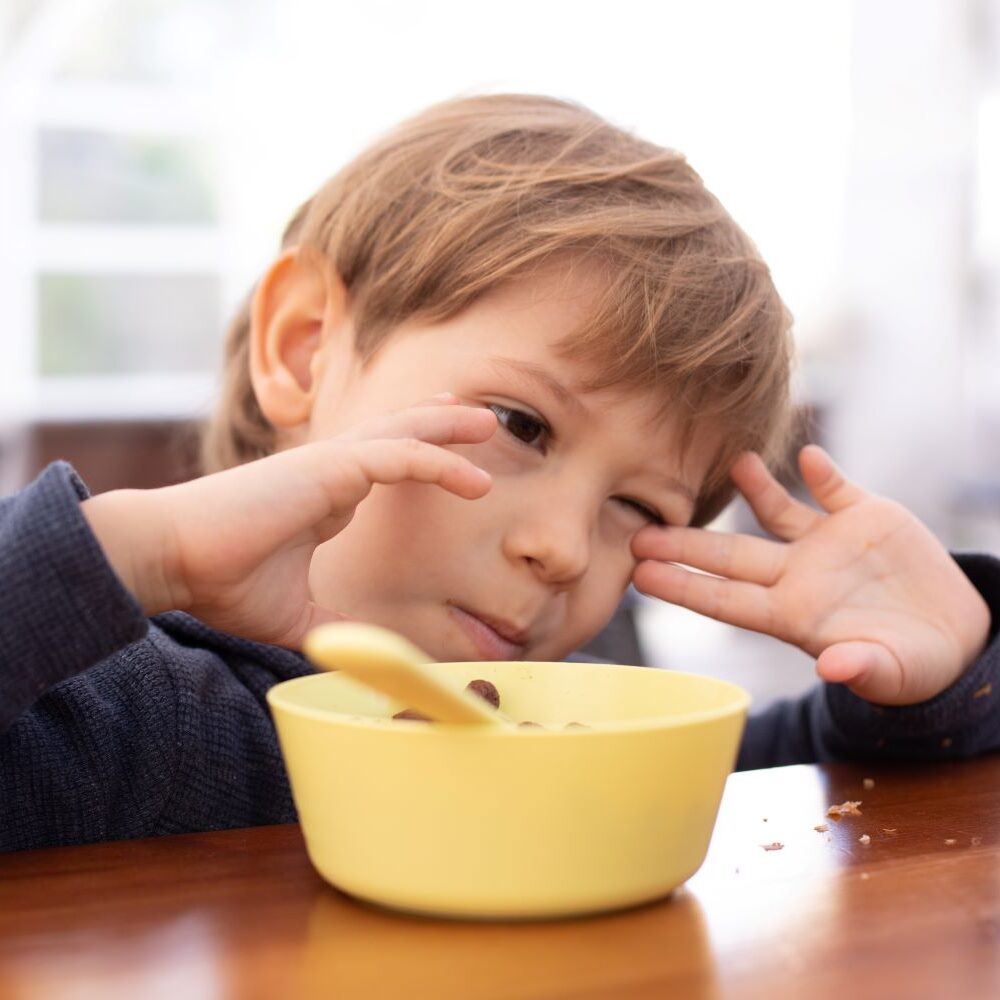We take a look at the challenges children with ADHD can have with food, and what you can do to help your child get into good eating habits.
People with ADHD can be more likely to have various issues around eating because of their likely impulsivity and other cognitive, biological and emotional factors. Binge eating is particularly associated with ADHD, since individuals can find it difficult to control the amount of food or speed of eating. This has led to a link between ADHD and obesity, despite the fact that we often think of those with ADHD as being ‘always on the go’.

Our internal organs send us messages telling us how we feel, which is called interoception. These messages often aren’t clear for neurodivergent people. This means they might not know when they really are hungry and when they are full. They also might struggle with planning and decision-making around food. This often becomes clearer when children start to make their own decisions about when and what they eat rather than when you are still planning and making meals for them.
Poor sleep, boredom, anxiety, anger and low self-esteem can lead to emotional difficulties with food for every one of us. But a lack of impulse control can make this worse for those living with ADHD.
More recent studies have also found that food triggers a higher reward reflex in the ADHD brain than in the neurotypical brain as more dopamine is produced. The most ‘rewarding’ foods are likely to be higher in fat or sugar. This is not to suggest that all children with ADHD overeat. Many are very picky eaters who have little interest in food and can’t focus on it or are so busy that they forget to eat.
Poor sleep, boredom, anxiety, anger and low self-esteem can lead to emotional difficulties with food for every one of us. But a lack of impulse control can make this worse for those living with ADHD.
Things you can do to support your child
If you’re worried about picky or impulsive and emotional eating, what can you do to encourage better eating habits?
Consider sensory challenges
The sensory issues outlined in our article How to support your child with autism with food and eating can also apply to children and young people with ADHD. Be aware of the difficulties. Be empathetic and try to control your reactions as anger and raised voices make these sensitive situations worse.
Plan ahead and be prepared
Some ADHD medications can suppress appetite during the day but can mean your child may get hunger pangs as these wear off in the evenings. Have plenty of healthy snacks available and be creative in the evenings with activities your child could be doing other than eating. You could help them make a list of things they can do when bored which do not involve food, like:
- cycle round the block
- contact a friend
- read a chapter of a book
- do a puzzle
- walk the dog.
You may prefer to plan meals and snacks to fit with hunger cues rather than the time on the clock. Don’t get bogged down in convention. If they want to eat breakfast cereal or bacon and eggs for dinner rather than breakfast, does it really matter?

Be aware of how much your child is eating
Using smaller plates and bowls can help with portion control. Lots of small snacks and meals throughout the day can be appealing to children who find it hard to stop moving long enough to sit at a table and can actually be a good option as long as the snacks are nutritious. Don’t keep snacks lying in open view in the kitchen. Out of sight is out of mind.
Make sure any leftovers are placed out of reach and not just left on the table. They are much less likely to help themselves to another spoonful if they have to get up to do so. If they ask for ‘more’ after finishing their meal, ask them to wait for ten minutes and check in with their stomachs after that time to check they’re hungry. For your child, it may take longer for those messages to reach their brain.
Don’t let your child drink too many calories. Many drinks are just as fattening as food so instead encourage your child to drink a glass of water with food.
Try mindful eating
Try mindful eating by encouraging your child to concentrate on their eating instead of gaming, watching TV or studying at the same time. Their brains really need to register what they have eaten. Ask them to take some deep breaths before eating and encourage them to put their knife and fork down between mouthfuls. Think of ways to make sitting still at a table easier for your child. Wobble cushions, resistance bands round the legs to push and pull against with their feet can be effective.
Encourage good sleep and exercise habits
Encourage regular sleep and exercise, both of which help to regulate appetite, mood, cognitive clarity and traits of ADHD. Help your child to understand that negative emotions can lead to mindless eating. When they are anxious or angry and seeking comfort, encourage them to take five minutes to breathe before deciding if they still need a snack.
For more information and resources about ADHD, see the ADHD Foundation website.
This article was written in collaboration with Norfolk & Waveney Autism and ADHD Support Service. Use our online service finder for SEND and neurodiversity services in your area, or find your local IASS here.

Call, text, email or web chat FamilyLine
If you’re feeling overwhelmed, worried or upset about any aspect of your family life, FamilyLine is here for you. We offer free emotional support and guidance on family relationships, conflict, parenting, caring, financial worries and more.
Contact FamilyLine











